The files and folders you use more frequently on your PC keep getting added to the Folders section under Quick Access in File Explorer. These are called Frequent Folders in Windows 11/10; however, sometimes, you may want to get rid of them.
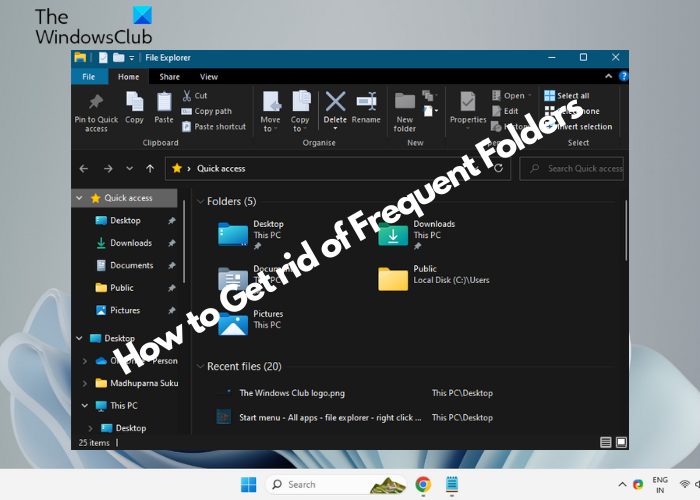 So, for example, if you are sharing your PC/laptop with others (friends/family), you may not want others to know which files or folders you used recently. Or, you may simply want to reduce the clutter. Along with the frequently used folders, you will also see a list of recently used files. While we have already covered how to remove items from the Frequent Places list in the File Explorer, in this post, we will explain how to remove both Frequent folders in Windows 11/10.
So, for example, if you are sharing your PC/laptop with others (friends/family), you may not want others to know which files or folders you used recently. Or, you may simply want to reduce the clutter. Along with the frequently used folders, you will also see a list of recently used files. While we have already covered how to remove items from the Frequent Places list in the File Explorer, in this post, we will explain how to remove both Frequent folders in Windows 11/10.
How to get rid of Frequent Folders in Windows 11/10
Windows has recognized this requirement and offers not one, but more than one way to deal with this situation. In this post, we will discuss four ways to remove the Frequent folders in Windows File Explorer.
- Using the right-click context menu via the Taskbar
- Using the right-click context menu via the Start menu
- Remove Frequent Folders via Folder Options
- Rename the registry entry
1] Using the right-click context menu via the taskbar
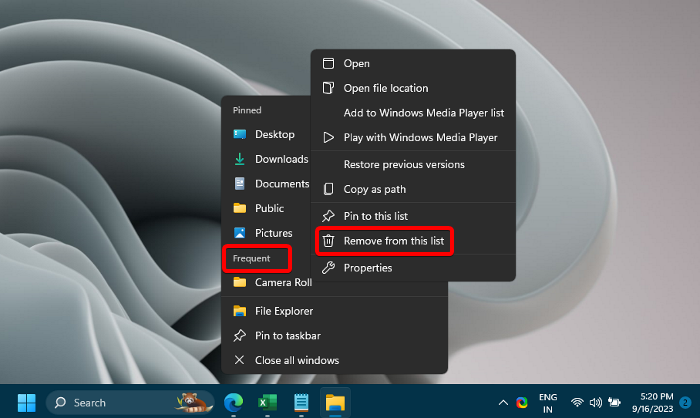
To remove frequent folders, you can use the taskbar. All you need to do is open File Explorer, and minimize it to the taskbar. Now, right-click on the File Explorer icon on the taskbar, and go to the Frequent section. Here, right-click on the folder you want to delete and select Remove from this list.
2] Using the right-click context menu via the Start menu
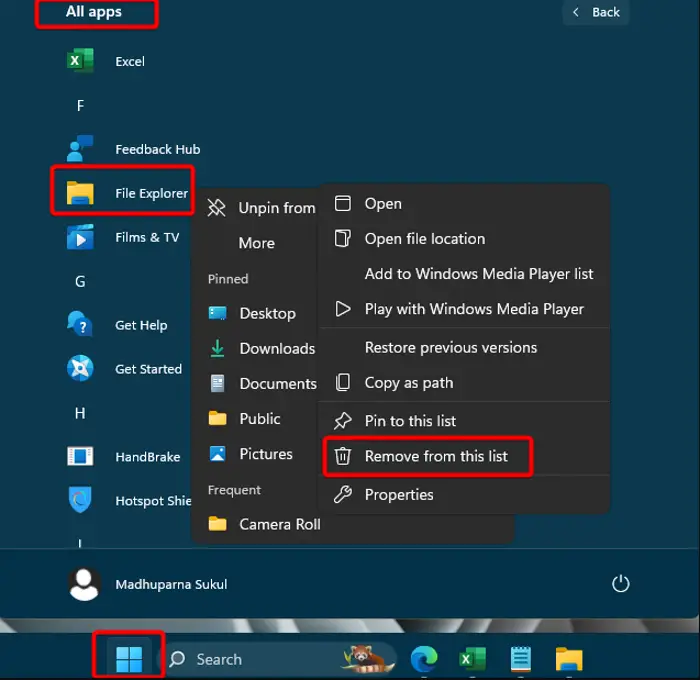
This method also works similarly to Method 1 but via the Start menu. For this, click on the Windows Start button, and click on All Apps. Next, look for File Explorer (scroll down and not search for it), right-click on it, again right-click on the folder you want to delete, and select Remove from this list.
Read: Remove Most Used Apps from the Start Menu in Windows
3] Remove frequent folders via Folder Options
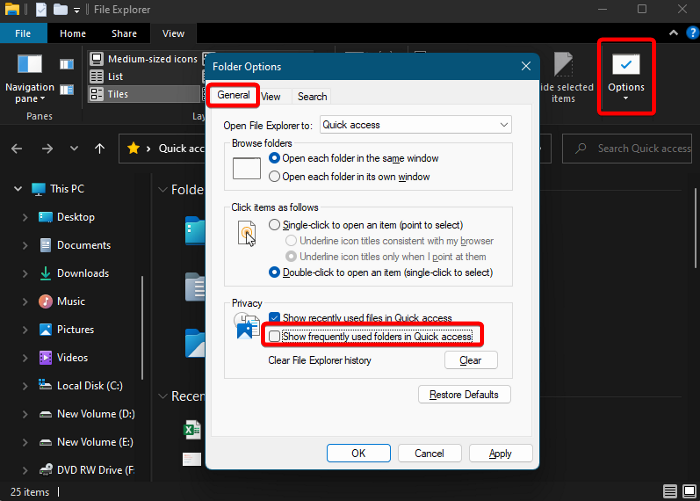
Alternatively, you can get rid of the frequent folders using the Folder Options. For this, open File Explorer, go to the View tab and click on Options. This will open the Folder Options dialogue. Here, under the General tab, go to Privacy, and deselect Show frequently used folders in Quick Access. Press Apply and then OK to confirm the changes.
You may uncheck the Show recently used files in Quick Access to remove the Recent files.
You can also refer to our detailed guide to learn more ways to delete Recent files and folders in Windows. Or, you can press the Clear button to Clear File Explorer history at once for all your recent activity.
Read: Quick Access Popup is a free tool to manage frequently used files and folders
4] Rename the registry entry
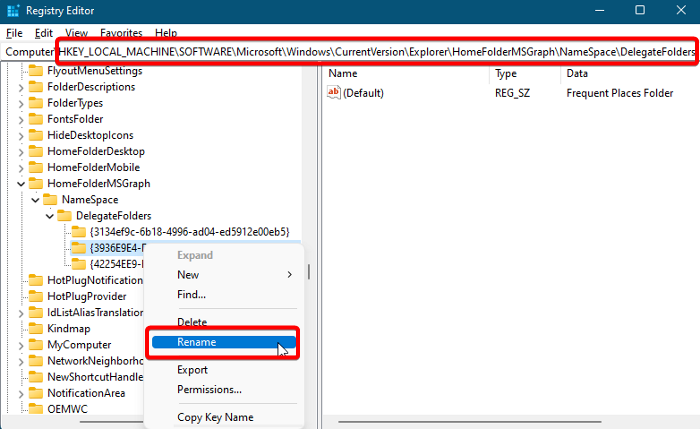
If none of the above methods work, you can edit the registry settings, for example, rename the registry entry to remove the frequent folders. But before you make any changes to the registry editor, create a backup of the registry settings to restore data in case you lose any data during the process.
Now, open the registry editor, and navigate to the below path:
HKEY_LOCAL_MACHINE\SOFTWARE\Microsoft\Windows\CurrentVersion\Explorer\HomeFolderDesktop\NameSpace\DelegateFolders
Next, look for the below entry, right-click and select Rename:
{3936E9E4-D92C-4EEE-A85A-BC16D5EA0819}
Now, copy the below entry and paste it in the name field as it is (with the minus sign):
-{3936E9E4-D92C-4EEE-A85A-BC16D5EA0819}
Now, the frequent folders section will be removed from the File Explorer.
How to disable file grouping for all the folders in Windows 10 11?
If you want to turn off file grouping, here’s what you need to do. Open File Explorer, and navigate to the folder whose files you want to degroup (for example, Desktop). Now, click on the View tab, and in the Current View section, click on the Group by drop-down. Select None from the menu. Repeat the same for all folders to disable file grouping.
How do I delete a folder that keeps reappearing?
If a folder keeps reappearing even after deleting it repeatedly, you can press the Shift + Delete shortcut keys to permanently delete it. It will help you bypass the Recycle Bin and ensure the folder is completely removed. However, make sure you do not use this method to delete the Windows system files.
Leave a Reply